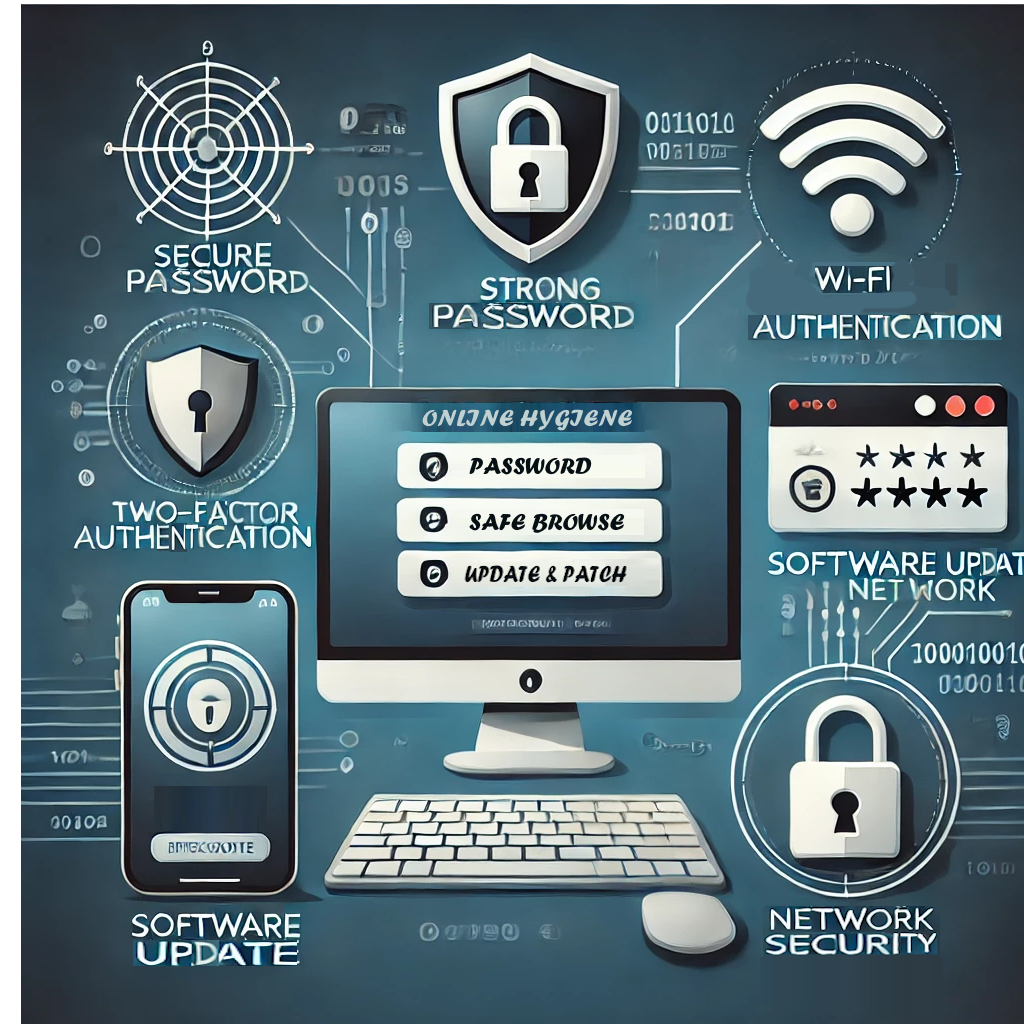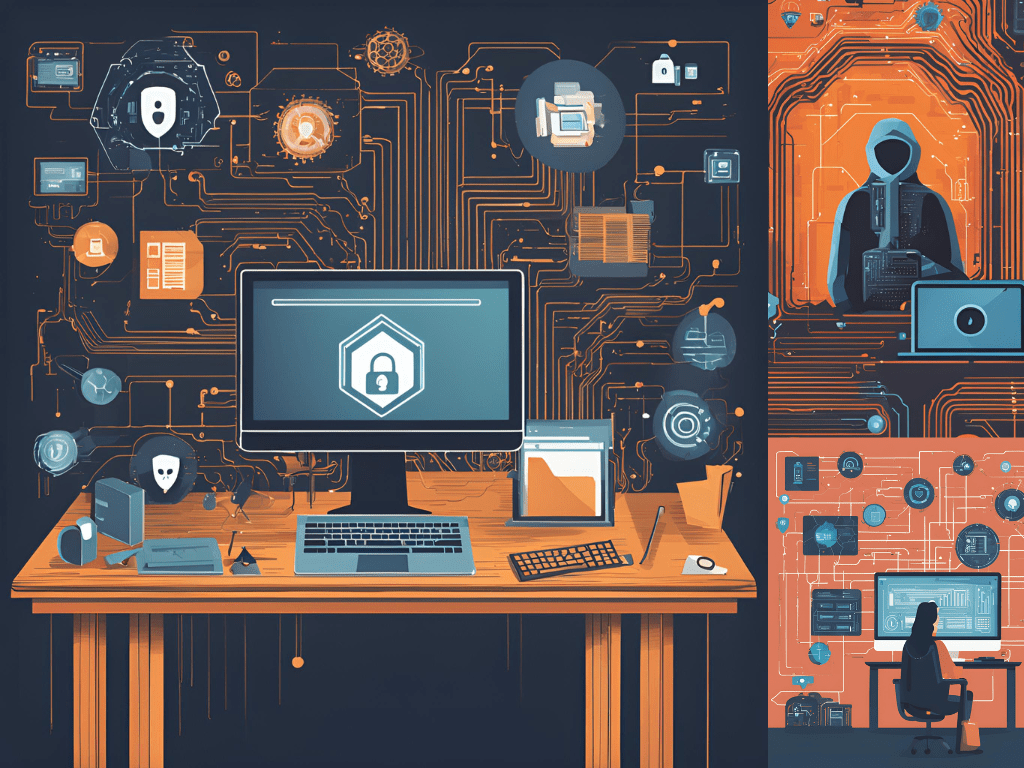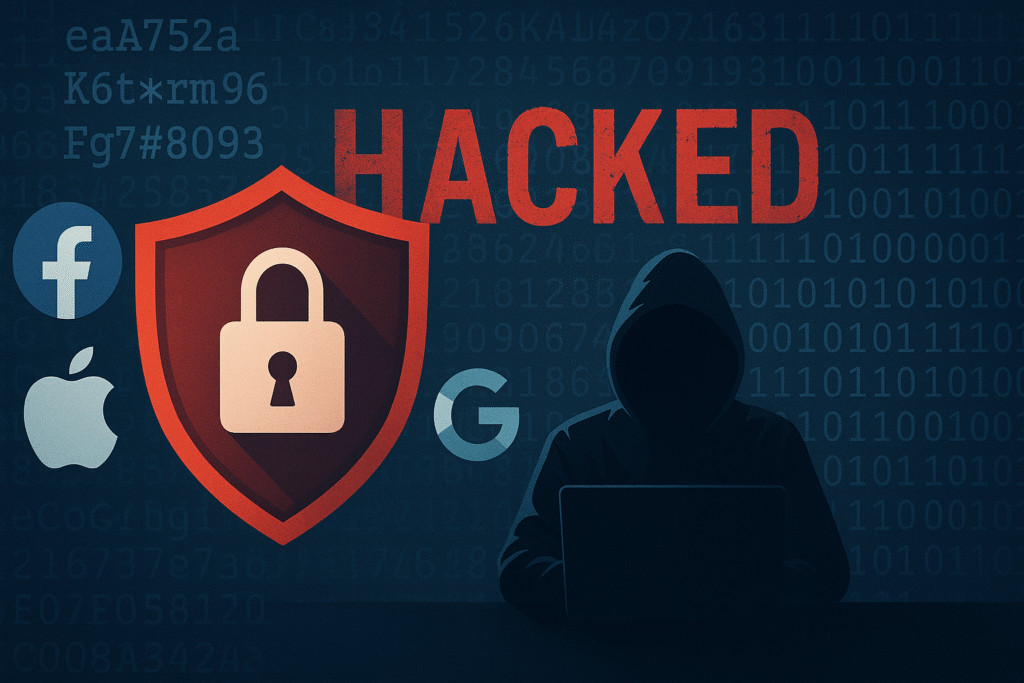The Importance of Strong, Unique Passwords
In the realm of online security, the significance of strong, unique passwords cannot be overstated. Weak or reused passwords pose substantial risks, often serving as a gateway for unauthorized access to personal and professional accounts. Cybercriminals deploy various methods, such as brute force attacks and credential stuffing, which exploit weak password defenses to penetrate secure systems. Thus, maintaining robust password practices is a cornerstone of effective cyber hygiene.
A strong password typically consists of a random combination of uppercase and lowercase letters, numbers, and special characters, significantly diminishing the likelihood of successful unauthorized access. Avoid using easily guessable information like birthdays, common words, or repetitive sequences, as these are the first targets for hackers. Instead, aim for lengthy and complex passwords, which exponentially increase the difficulty of deciphering through illicit means.
To facilitate the generation and management of strong passwords, employing a reliable password manager is highly beneficial. Password managers can not only create complex passwords effortlessly but also store them securely, reducing the need for memory-dependent recall. This tool safeguards against the peril of password reuse across multiple platforms— a common practice that dramatically heightens susceptibility to cyber breaches. By curating a vault of unique and intricate passwords, these managers act as a formidable defense mechanism against potential cyber threats.
In conclusion, prioritizing the adoption of strong and unique passwords is an essential practice within the broader scope of cyber hygiene. Through the use of random character combinations and leveraging password managers, individuals can significantly enhance their online security and reduce vulnerabilities. Vigilance in password management is pivotal in countering the ever-evolving tactics of cyber adversaries, ensuring a fortified defense against breaches and unauthorized access.
Regular Software Updates and Patches
Maintaining up-to-date software is a fundamental practice in safeguarding online security. Regular software updates and patches are essential in closing potential vulnerabilities that attackers might exploit. Cybercriminals often target outdated software, leveraging known weaknesses to gain unauthorized access to systems, steal data, or disrupt operations. Thus, timely updates are a critical layer of defense against cyber threats.
Operating systems, applications, and anti-virus programs require consistent updates to ensure optimal protection. Enabling automatic updates can significantly reduce the risk of missing critical patches. This feature typically allows systems to download and install updates without manual intervention, ensuring continuous protection against emerging threats. It is particularly important for vital software components, such as web browsers, office suites, and operating systems, which are frequently targeted by cyber attackers.
Beyond security, regular updates and patches can also enhance overall system performance. They often address software bugs, improve functionality, and introduce new features, contributing to a smoother user experience. By promptly installing updates, users not only secure their data but also benefit from the latest advancements and optimizations made by software developers.
Incorporating this practice into routine cyber hygiene involves a few straightforward steps. Firstly, users should configure their devices and applications to check for updates automatically. Regularly reviewing update settings ensures that no important patches are overlooked. Additionally, subscribing to security newsletters or following official software blogs can keep users informed about major updates and vulnerabilities.
In essence, remaining vigilant about software updates is crucial for robust online security. Proactive maintenance of software defenses against vulnerabilities can significantly deter cyber attacks. By embracing automatic updates and staying informed about new patches, users fortify their systems, ensuring both security and enhanced performance in their daily digital interactions.
Safe Browsing Practices
In the digital age, safe browsing practices are essential to maintain robust cybersecurity. Recognizing and avoiding cybersecurity threats, such as phishing attempts, can significantly reduce the risk of online attacks. Phishing schemes often come in the form of deceptive emails, messages, or websites designed to steal sensitive information. Users should be cautious of any unsolicited communications that prompt them to click on links or provide personal information. Verify the authenticity of such messages by reaching out to the legitimate source directly.
Another fundamental aspect of safe browsing is ensuring the websites you visit are secure. Look for URLs that begin with “HTTPS” rather than “HTTP.” The “S” signifies that the connection is encrypted, adding a layer of security in transmitting data between your browser and the website. Additionally, a padlock icon next to the URL indicates a secure connection.
Downloads from unknown or suspicious sources pose significant risks. Malicious software, often disguised as legitimate files, can infect your system and compromise your security. Download software and files only from reputable and well-known websites. Utilize reputable ad-blockers and anti-malware tools to shield your system from potentially harmful ads and malicious software. These tools can block deceptive ads that may lead to insecure sites or prompt inadvertent downloads.
Public Wi-Fi networks, while convenient, lack robust security measures, making them a prime target for cybercriminals. Information transmitted over such networks can be easily intercepted. To protect your data, avoid conducting sensitive activities, such as online banking or shopping, on public Wi-Fi. Instead, use a Virtual Private Network (VPN), which encrypts your data and creates a secure connection, even on unsecured networks.
Developing and maintaining safe browsing practices is crucial for online security. By recognizing phishing attempts, verifying secure websites, being cautious with downloads, using protective tools, and safeguarding your connection on public Wi-Fi networks, you can significantly reduce your risk of encountering cybersecurity threats. An informed and vigilant approach to internet use is the cornerstone of effective cyber hygiene.
Conclusion: Building a Habit of Cyber Hygiene
The journey towards robust cyber hygiene is an ongoing process, rather than a one-time effort. By consistently practicing cyber hygiene, you can significantly reduce your risk of falling victim to cyber threats. This blog has highlighted several key practices, including the creation of strong passwords, ensuring timely software and system updates, and maintaining safe browsing habits. Each of these practices plays a significant role in safeguarding your digital presence.
Strong passwords form the first line of defense against unauthorized access. It’s essential to use unique, complex combinations of characters and to change passwords regularly. Also, employing multifactor authentication can add an extra layer of security.
Regular updates are equally crucial. Both operating systems and individual applications should be updated as soon as new versions, especially those addressing security vulnerabilities, are released. This practice helps keep your systems fortified against emerging threats.
Additionally, safe browsing habits cannot be overstated. Avoid visiting suspicious websites, clicking on unknown links, or downloading unverified software. These simple steps can prevent a wide array of malware infections and phishing attacks.
It’s important to remember that cyber hygiene is a continuous practice that should be integrated into your daily routine. Staying informed about the latest cyber threats and evolving best practices will further empower you to protect your digital footprint effectively.
Finally, take immediate steps to enhance your cyber hygiene. Regularly reviewing and updating your security measures can provide peace of mind and security in your online activities. Your digital life is invaluable; protect it with diligent and consistent cybersecurity practices.



